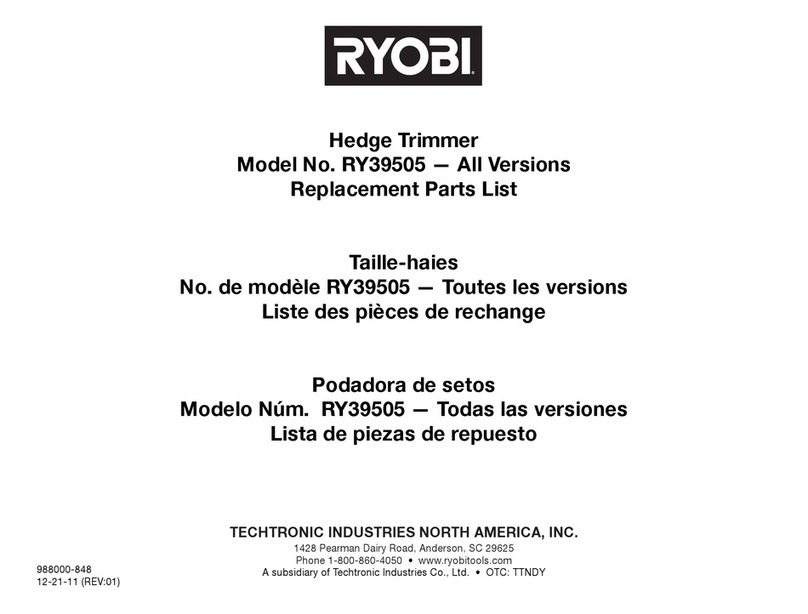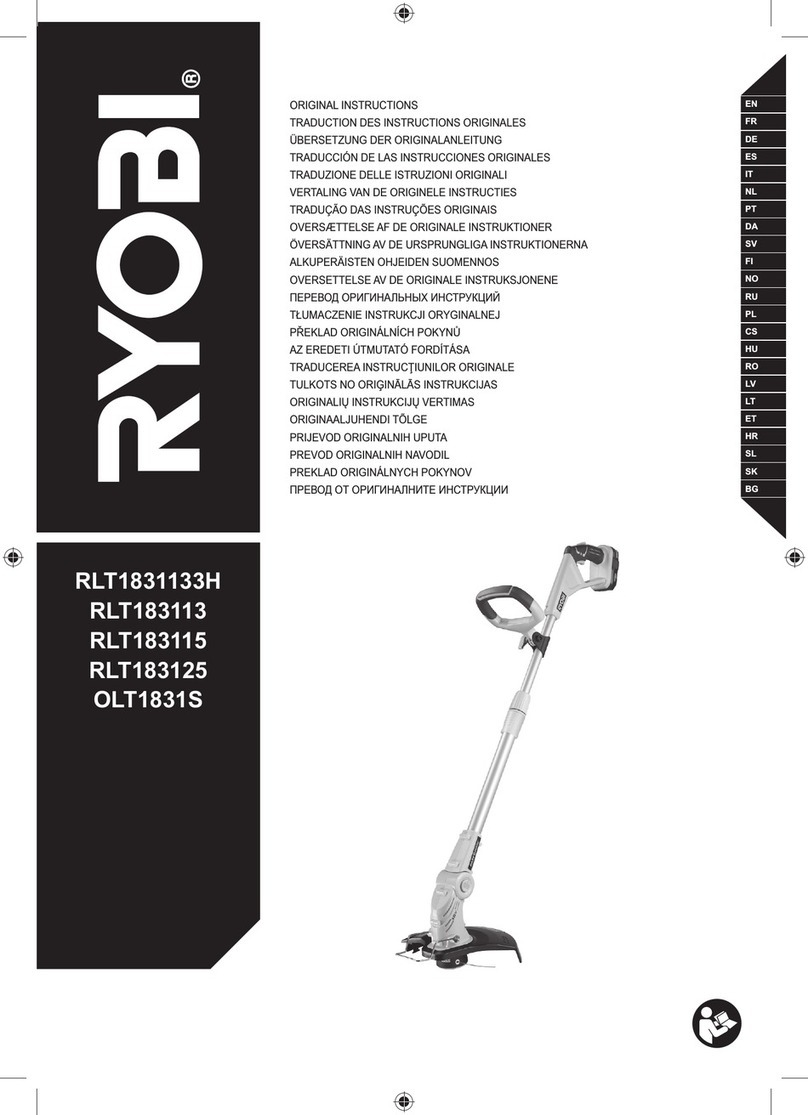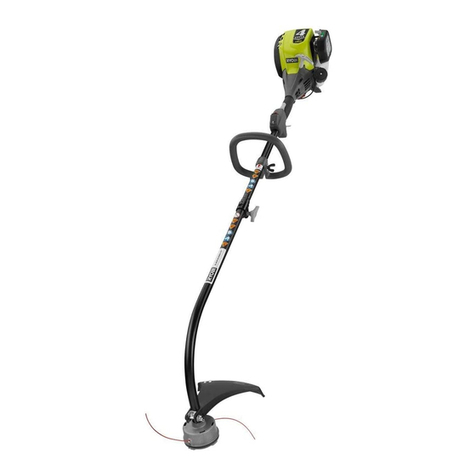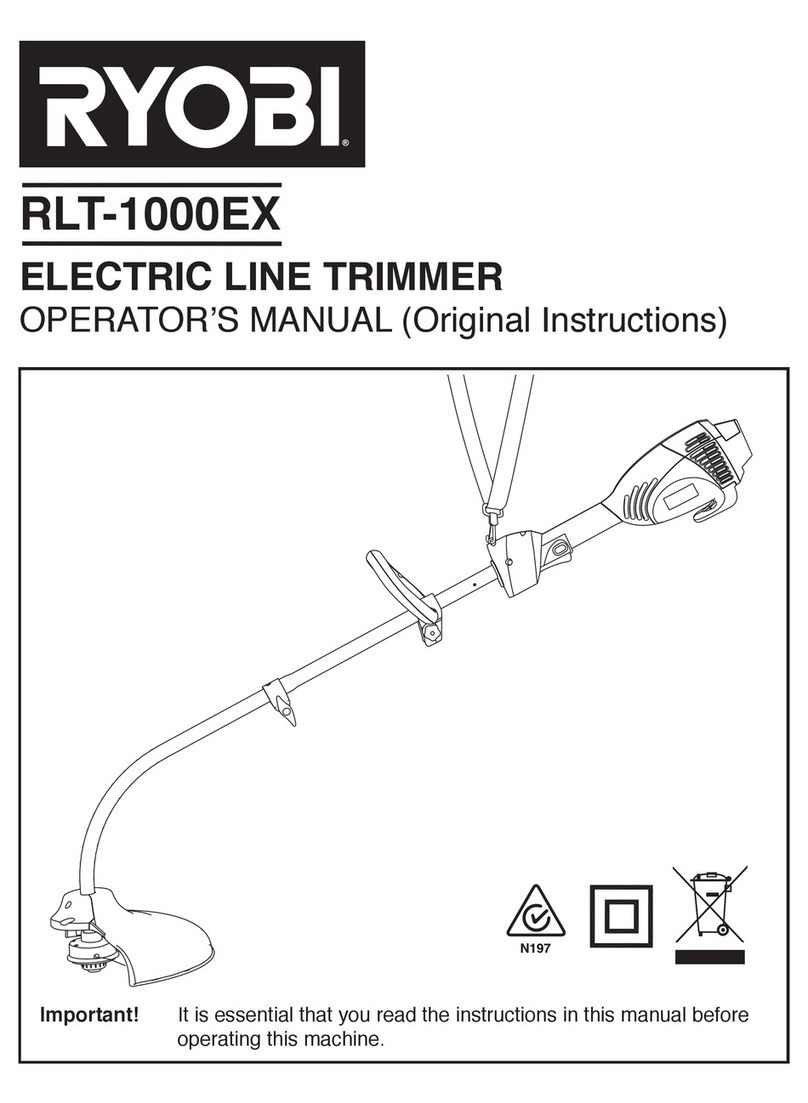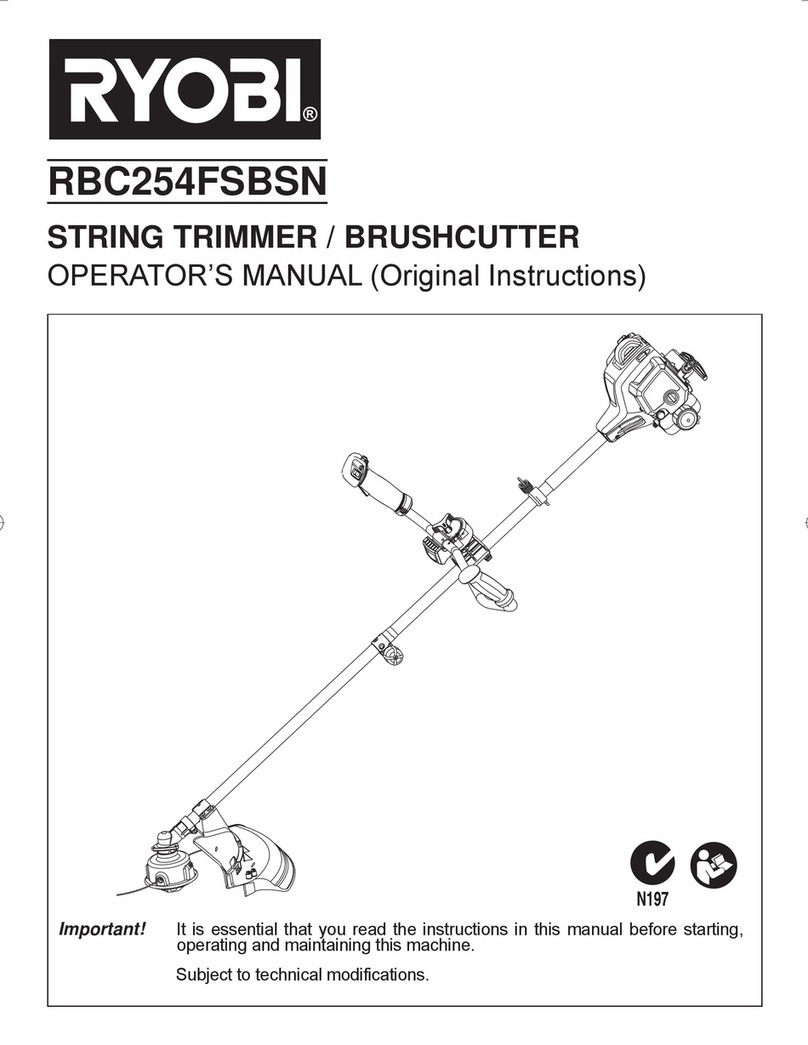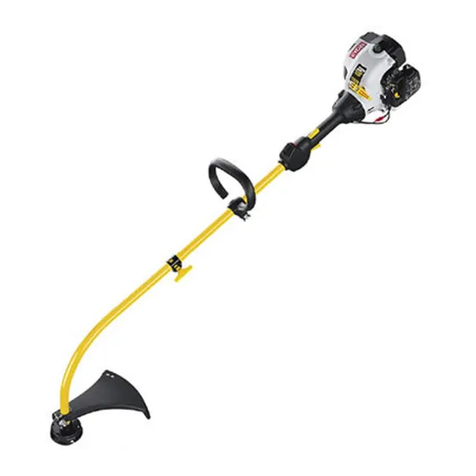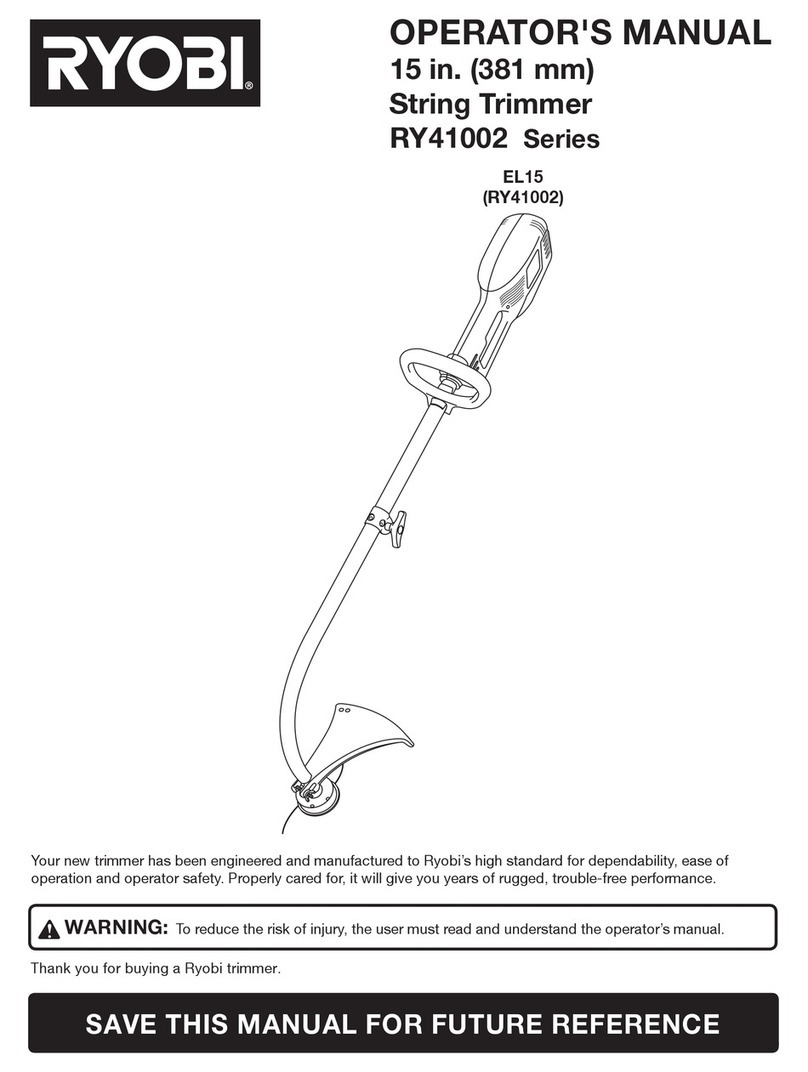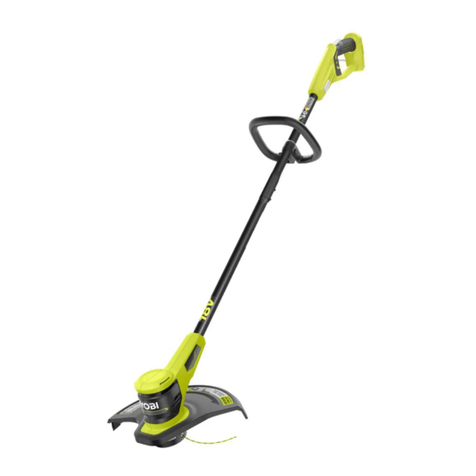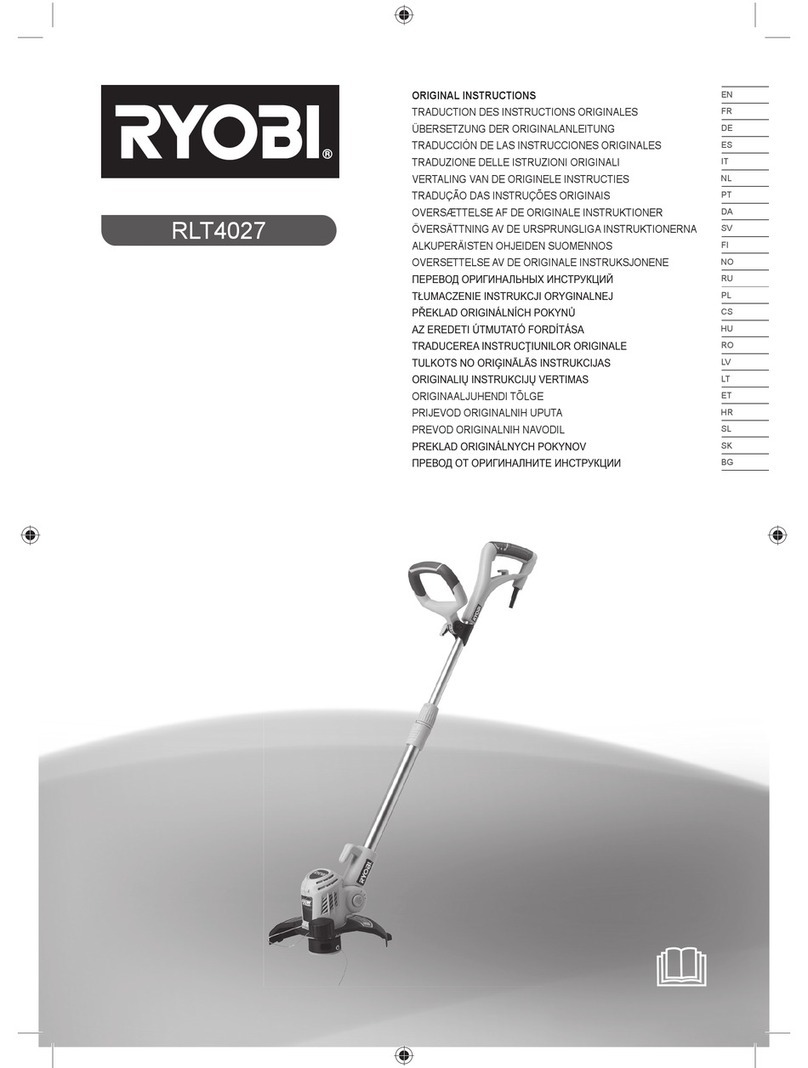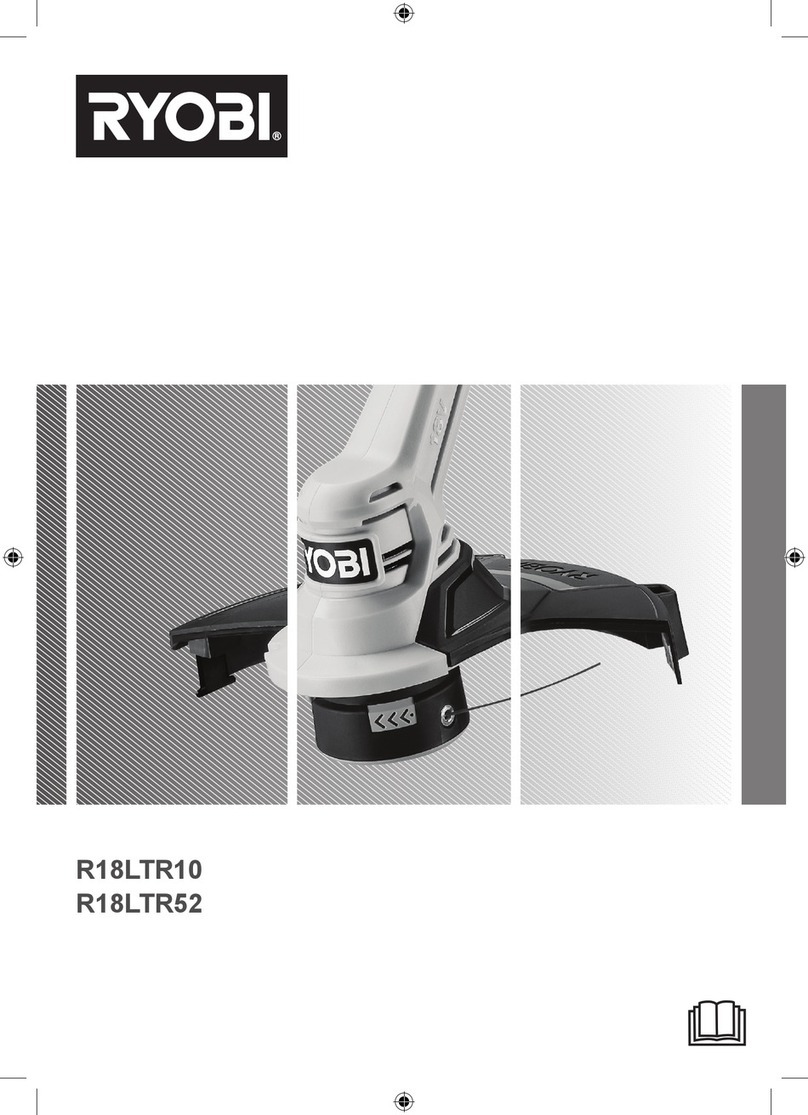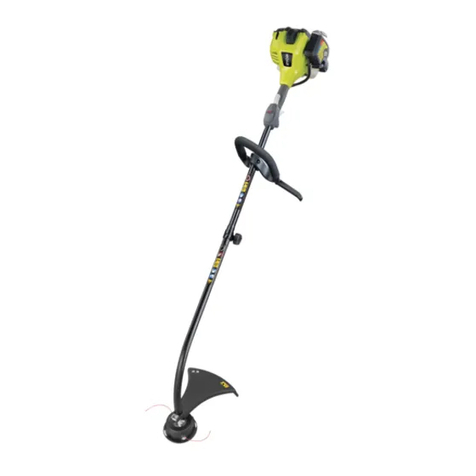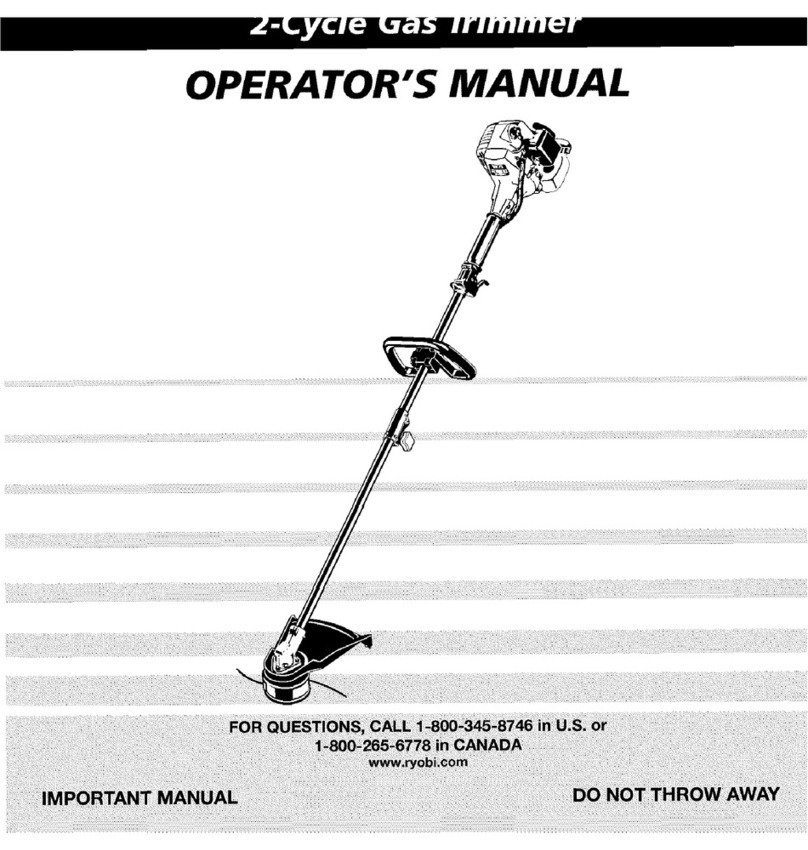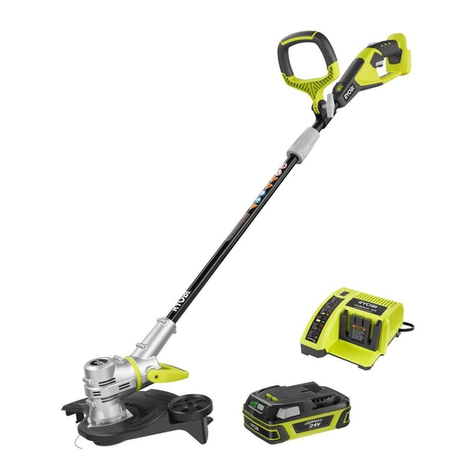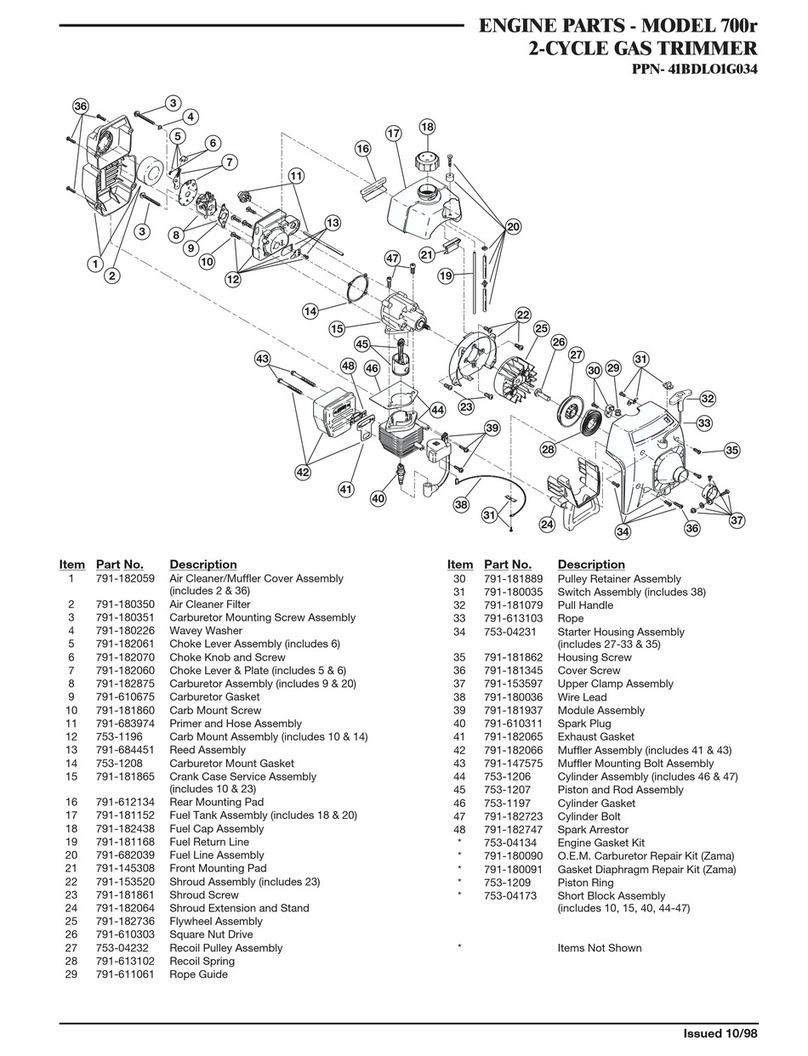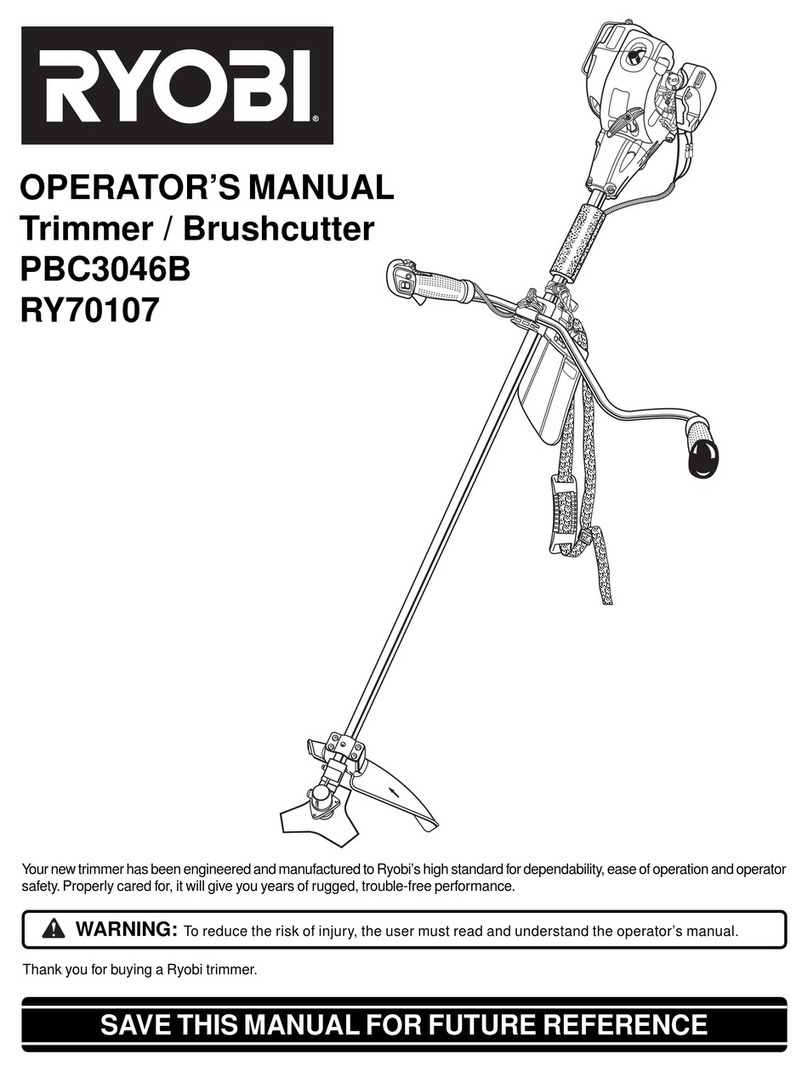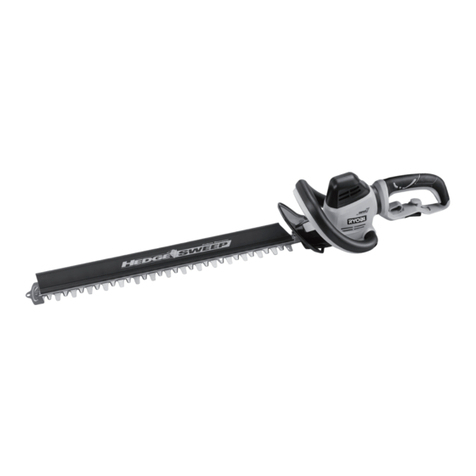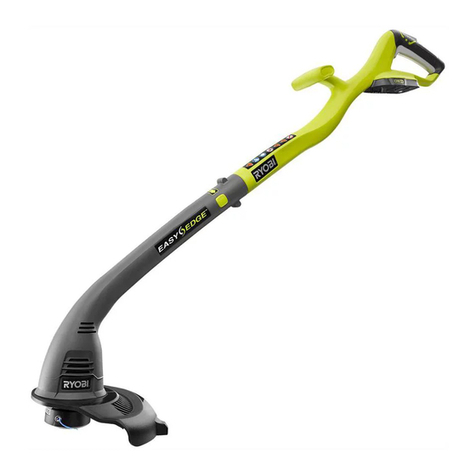
4 — English
Before starting the hedge trimmer, make sure the blade
is not in contact with any object.
Stop the unit, remove the battery pack, and make sure
the blade has stopped before setting the unit down.
Never cut any material with a diameter larger than
3/8 in.
Riskof cut.Keep hands away fromblades. Donot attempt
to remove cut material or hold material to be cut when
blades are moving. Keep both hands on handles when
power is on. Make sure battery pack is removed and the
trigger is released when clearing jammed material from
blades.Donot graspthe exposedcuttingblades orcutting
edges when picking up or holding the unit.
Blades coast after unit is turned off.
Always stop the motor when cutting is delayed or when
walking from one cutting location to another.
Keep unit clean of grass clippings and other materials.
They may become lodged in the cutting blades.
Store the unit inside in a dry place, either locked up or up
high to prevent unauthorized use or damage. Keep out
of the reach of children or untrained individuals.
Replace scabbard cover when unit is not in use.
Never douse or squirt the unit with water or any other
liquid. Keep handles dry, clean, and free from debris.
Clean after each use; see storage instructions.
Secure the unit while transporting.
BATTERY SAFETY
Battery operated units do not have to be plugged into an
electrical outlet; therefore, they are always in operating
condition. Be aware of possible hazards even when unit
is not operating.
Removethe batterypack beforemakingany adjustments,
cleaning, storing, or removing material from the unit, or
when not in use.
A battery pack must be recharged only with the specified
charger for the battery pack. A charger that may be
suitable for one type of battery pack may create a risk
of fire when used with another battery pack. Use battery
pack only with charger listed.
To reduce the risk of explosion and possible injury, DO
NOT place battery units or their batteries near fire or heat.
Do not mutilate the battery pack. Released electrolyte is
corrosive and may cause damage to the eyes or skin. It
may be toxic if swallowed.
Use only with charger listed. For use with 18V nickel-
cadmium and 18 V lithium-ion battery packs, see tool/
appliance/battery pack/charger correlation supplement
987000-432.
Batteries can explode in the presence of a source of
ignition, such as a pilot light. To reduce the risk of serious
personal injury, never use any cordless product in the
presence of open flame. An exploded battery pack can
propel debris and chemical. If exposed, flush with water
immediately.
Do not charge unit in a damp or wet location. Following
this rule will reduce the risk of electric shock.
For best results, your battery unit should be charged in a
location where the temperature is more than 50°F (10°C)
but less than 100°F (38°C). Do not store outside or in
vehicles.
Under extreme usage or temperature conditions, battery
pack leakage may occur. If liquid comes in contact with
your skin, wash immediately with soap and water, then
neutralize with lemon juice or vinegar. If liquid gets into
your eyes, flush them with clean water for at least 10
minutes, then seek immediate medical attention.
Do not crush, drop or damage battery pack. Do not
use a battery pack or charger that has been dropped or
received a sharp blow. A damaged battery is subject to
explosion. Properly dispose of a dropped or damaged
battery immediately.
Do not dispose of batteries in a fire. The cell may explode.
Batteries should be recycled. Consult your local waste
authority for information regarding available recycling
and/or disposal options.
When battery pack is not in use, keep it away from other
metal objects like: paper clips, coins, keys, nails, screws,
or other small metal objects that can make a connection
from one terminal to another. Shorting the battery pack
terminals together may cause sparks, burns, or a fire.
Save these instructions. Refer to them frequently and use
them to instruct others who may use this tool. If you loan
someone this tool, loan them these instructions also to
prevent misuse of the product and possible injury.
SPECIFIC SAFETY RULES


